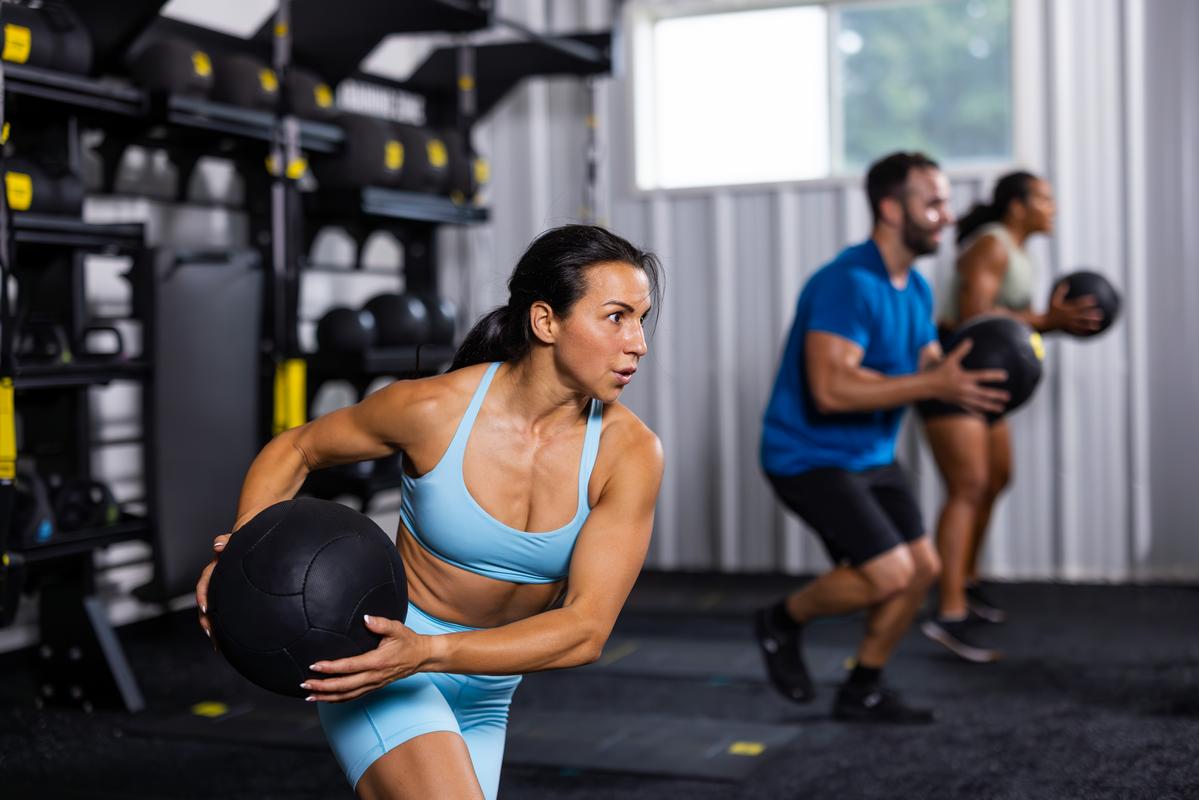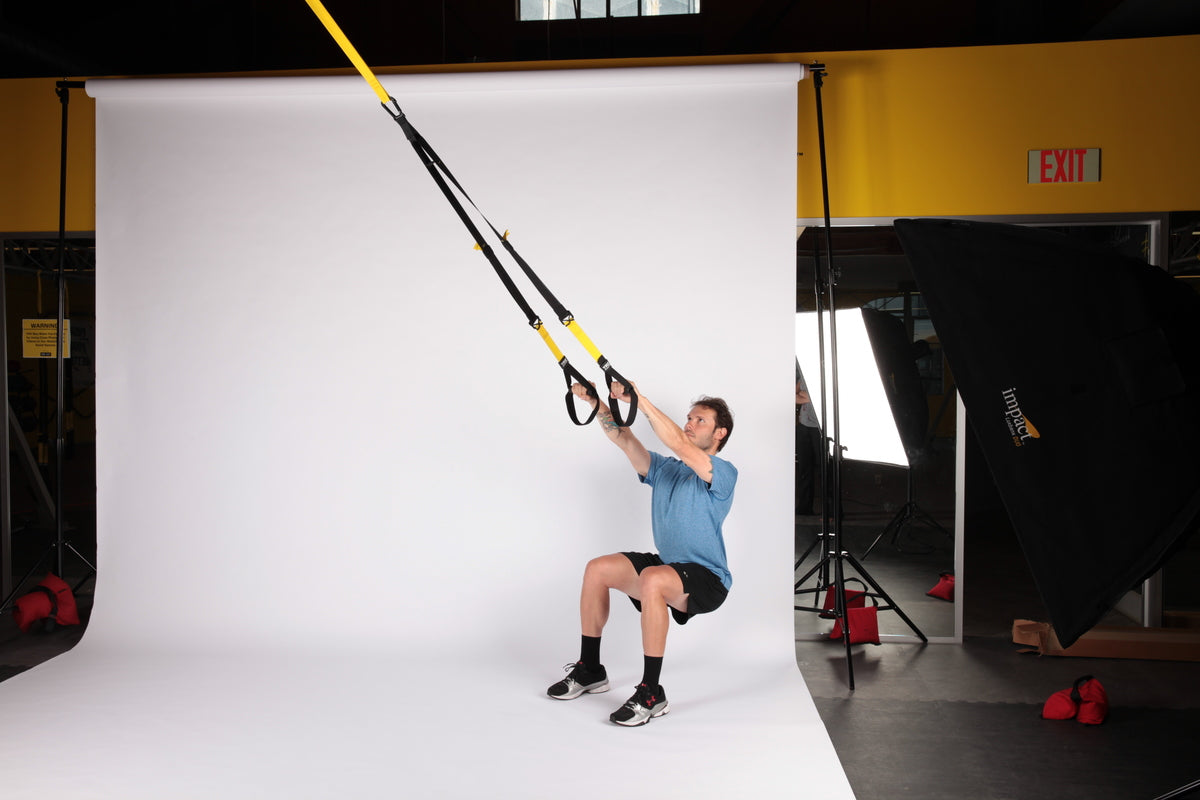Medicine ball slams offer an outstanding way to boost upper body power and overall strength through plyometric exercises. Incorporating a medicine ball into your core workout can significantly enhance athletic performance, cardiovascular health, and core strength in multiple directions.
Although medicine ball slams involve throwing, they are far more than just an upper body exercise. They require full-body engagement, with your lower body and core working hard to stabilize and protect your spine during the intense throws. Your cardiovascular system also plays a crucial role, meeting the high energy demands and accelerating your metabolism to burn substantial calories.
If you have a solid foundation in strength training, integrating medicine ball slams into your routine can be a highly effective way to elevate your workouts.
How to Perform Medicine Ball Slams
To perform medicine ball slams, you only need a bit of open space and a medicine ball. While various types of medicine balls can be used, slam balls are the safest choice. If you’re a beginner, we recommend reading up on medicine balls to understand how to use this type of workout equipment.
Slam balls are designed to be softer and more pliable, which prevents them from bouncing back as standard medicine balls do. Want to find the perfect slam ball exercises for your fitness level? Take our quick assessment quiz to get a personalized training plan. This added flexibility reduces the risk of injury by minimizing the chance of the ball rebounding forcefully after a throw.
Here’s how to do a Medicine Ball Slams:
- Start standing tall with shoulder-width feet. Hold a medicine ball at your torso with 2 hands and slight knee and hip bends. Good posture requires bringing your abdomen toward your spine and rolling your shoulders back.
- Load the spring by squatting slightly. Take a deep breath and push through your heels to raise up onto your toes. Straighten knees and hips to throw medicine ball overhead. Your arms should be completely extended and the ball practically above you. Keep the ball from going behind you by keeping your arms straight and without slouching.
- Slam the medicine ball between your feet with all your strength using your core and arms. Slam harder by pushing your hips back and bending your knees. When throwing the ball, exhale.
- Squat to get the ball from the floor and start the next slam. As you move the medicine ball overhead again, step up on your toes using your calves, quadriceps, hamstrings, and glutes.
- Repeat this move for a set, counting reps or time.
Keep in mind that this is a completely different exercise than traditional medicine ball throws. Try to learn the difference between the two so that you can get the functional movement down.
Benefits of Medicine Ball Slams
Medicine ball slams engage nearly every major muscle group, making them a valuable component of high-intensity workouts. In the upper body alone, this exercise targets the shoulders, chest, biceps, triceps, and upper back during the lifting and throwing motions.
Enhancing Agility
Enhanced coordination and core stability are not just beneficial for athletes seeking agility but also for anyone aiming to move more fluidly in daily life. These improvements can significantly aid in adapting to unforeseen physical challenges or obstacles encountered throughout the day.
Full-Body Workout
Although the movement appears to target the upper body, your lower body and core must also engage to generate the power and spring needed for the lift and throw. Medicine ball slams demand a coordinated effort between your upper and lower body to maintain the exercise's rhythm.
This is a full-body med ball workout, requiring your core muscles, including your glutes, abdominals, lower back, spinal erectors, and even your rotator cuffs, to work in unison to drive the movement. Performing medicine ball slams regularly can significantly enhance core strength and stability.
Cardiovascular Training
Adding slams to your workout routine can enhance the intensity of high-intensity interval training (HIIT) sessions or serve as a dynamic cardiovascular finisher after a strength training workout. These exercises are considered plyometric, meaning they involve explosive movements that elevate your heart rate, making them a valuable addition for cardiovascular fitness and overall conditioning.
Elevated Metabolic Rate
Medicine ball slams not only engage multiple muscle groups but also have a significant impact on your metabolism. When you integrate dynamic, full-body movements like this into your workout regimen, your cardiovascular system is pushed to supply oxygen to the working muscles more efficiently. This effect is amplified during sustained periods of exercise, such as a 60-second circuit, leading to increased calorie burn and metabolic activity.
Other Variations of Medicine Ball Slams
These workouts involve dynamic throwing actions, so if you have a weak core, lower back pain, or shoulder concerns, wait until you're healthy before doing them. Start with a lighter medicine ball or training sandbag to test your comfort. Until you can do the exercise painlessly, don't add it to your normal routine.
Medicine Ball Slam with Burpee
Add a burpee to overhead slams to boost intensity. Begin by performing a medicine ball slam, then add a burpee. Squat and place your hands shoulder-width apart on either side of the ball after smashing it. Jump back into a high plank.
Push up, lowering your chest to contact the medicine ball, then push back up to the high plank. Jump forward again, grab the medicine ball, then powerfully stand up to swing it overhead for the next slam. This version challenges shoulders, core, and legs.
Medicine Ball Thrusters
Start with a lighter medicine ball and control power and range of motion to set the intensity. Start by lifting the medicine ball above without much lower body work. Avoid using your core and hips to slam the ball to the ground by using your shoulders and upper body.
As your core strength increases, add abs, glutes, and quadriceps power to boost intensity. This can be achieved by squatting deeper at the start and finish of each slam, increasing range of motion and muscle engagement.
Tall Kneeling Chest Pass
This exercise targets your upper body strength by throwing a ball with maximum force against a wall while kneeling. It also engages your core muscles to maintain stability during the kneeling position, allowing you to generate maximum power. Incorporating this move into your workout routine, especially before a chest-focused session, can help enhance upper body strength and stability.
Split Stance Medicine Ball Slam
When performing a ball slam from a split stance, where one leg is positioned a foot or so behind the other, the emphasis shifts to the core muscles without requiring much hip extension during the slam. This variation leads to increased engagement of the core compared to a traditional med ball slam. Additionally, the staggered stance and deeper knee bend result in enhanced leg activation, providing a more comprehensive workout for both the upper and lower body.
Related: 10 Slam Ball Exercises
Common Mistakes to Avoid
Premature Excessive Activity
Instead of aiming for high-repetition sets or lengthy time intervals, focus on completing three to five sets of six to eight reps, ensuring ample rest between each set. The aim is to execute each rep with impeccable form, while maintaining as much speed as possible. When performed correctly, even six reps of overhead slams can provide a significant challenge.
Not Having the Right Medicine Ball
While almost any medicine ball can be used for medicine ball slams, opting for balls specifically designed for slamming, known as "slam balls," is the safest choice. Slam balls are filled with a soft material, typically larger than regular medicine balls, and they don't bounce upon impact with the ground. This reduces the risk of the ball rebounding and causing injury, such as hitting your face or damaging nearby objects.
Experienced individuals might prefer using medicine balls with bounce, but beginners should prioritize safety by selecting slam balls for their workouts.
Excessive Weight Usage
It's important to note that using heavier weights doesn't necessarily lead to better results in medicine ball slams. The key is to involve your entire body in the slamming motion, exerting maximum velocity and force. Begin with a lighter ball and focus on generating speed and activating your core muscles to propel the ball forcefully onto the floor.
Throwing the Ball with Insufficient Force
Power and performance in medicine ball slams depend on effective throws. Going through the motions without activating your core and lower body won't work. Each slam should be delivered with maximum power, strength, speed, and control to break the ball metaphorically on impact.
Visualizing breaking or tossing the ball through the floor will help you throw harder and perform better.
Using All Arms and Upper Body
Medicine ball slams may seem to focus on the upper body, but you must activate your complete body to optimize force and strength. Check your form in the mirror. Confirm that you are dropping into a semi-squat and using your lower body and core to build momentum for your overhead arm swing to finish the slam.
Safety and Precautions
Overhead medicine ball slams are a relatively safe addition to the workout routines of experienced individuals. However, they require a strong core and good coordination to be performed correctly.
If you experience lower back or shoulder pain, proceed with caution. Start with a lighter medicine ball and reduce your range of motion to see if the exercise feels comfortable for you.
Since maintaining proper form is crucial for preventing injuries and form tends to deteriorate as you tire, gradually increase the weight, sets, repetitions, or duration of the exercise. If you experience sharp or shooting pain or any discomfort in your lower back, stop immediately and switch to a different exercise.



